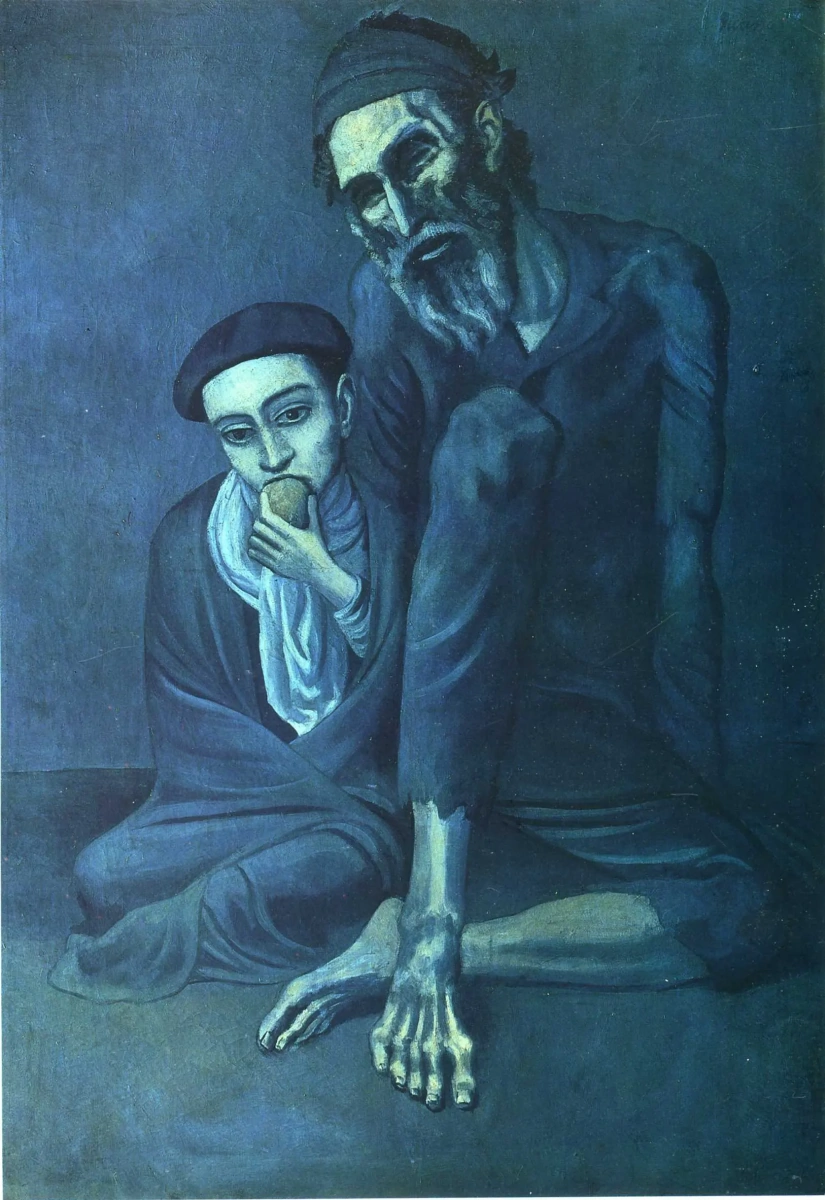log in
Enter site
Login to use Arthive functionality to the maximum
Old Jew and a Boy
Pablo Picasso • Malerei, 1903, 125×92 cm


















Bildbeschreibung «Old Jew and a Boy»
It took four attempts for Pablo Picasso to win over Paris. Prior to that, he visited the capital of European art three times, where he brought his paintings, trying to sell them, but each time he was in for a cruel disappointment. Going to Paris, Picasso was confident that critics and viewers would instantly appreciate his undeniable genius. However, the paintings were not sold for some reason. The critics took the works of the young Spaniard favorably, but they noted the lack of his individual style. The artist was terribly offended, and it can be said that all his further creative searches and experiments were a struggle for this very individuality and proof of his uniqueness.
The main themes of the blue period in the work of Picasso were poverty, hunger and suffering. He painted people caught in the underclass, unhappy, maimed and desperate. In fact, in these works, the artist expressed his own privations: during his life in Paris, he suffered from lack of money, he had nowhere to live, and sometimes he had nothing to eat. His depressed state was aggravated by the loss of his close friend Carlos Casagemas, who committed suicide because of unhappy love. The Old Jew and a Boy picture can be called the embodiment of all the Picasso’s sufferings of those years. Here we can see the climax of the triumph of blue shades, the artist only slightly dilutes them with yellow to emphasize the painful pallor of the characters’ skin.
The hungry face of the old man and his distorted proportions make one recall the subjects of El Greco’s paintings. However, there is something much more important behind the sensation of grief and despair: the characters of the picture are not alone, even in poverty and hunger they find the strength to support each other. During his life in Barcelona, often wandering around the local shantytowns, Picasso surely saw impoverished Jews and empathized with them. Perhaps that’s why he chose the image of the Jewish old man for this powerful work. In the 1990s, American writer and journalist Norman Mailer pointedly defined this picture quite precisely in his biographical book Portrait of Picasso as A Young Man, “Who has ever given us more intense portraits of concentration camp victims before half of them were even born?”
The main themes of the blue period in the work of Picasso were poverty, hunger and suffering. He painted people caught in the underclass, unhappy, maimed and desperate. In fact, in these works, the artist expressed his own privations: during his life in Paris, he suffered from lack of money, he had nowhere to live, and sometimes he had nothing to eat. His depressed state was aggravated by the loss of his close friend Carlos Casagemas, who committed suicide because of unhappy love. The Old Jew and a Boy picture can be called the embodiment of all the Picasso’s sufferings of those years. Here we can see the climax of the triumph of blue shades, the artist only slightly dilutes them with yellow to emphasize the painful pallor of the characters’ skin.
The hungry face of the old man and his distorted proportions make one recall the subjects of El Greco’s paintings. However, there is something much more important behind the sensation of grief and despair: the characters of the picture are not alone, even in poverty and hunger they find the strength to support each other. During his life in Barcelona, often wandering around the local shantytowns, Picasso surely saw impoverished Jews and empathized with them. Perhaps that’s why he chose the image of the Jewish old man for this powerful work. In the 1990s, American writer and journalist Norman Mailer pointedly defined this picture quite precisely in his biographical book Portrait of Picasso as A Young Man, “Who has ever given us more intense portraits of concentration camp victims before half of them were even born?”
Obras recomendadas:
























